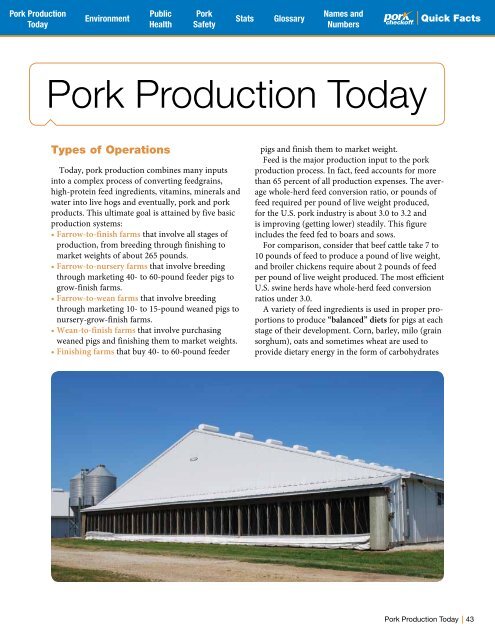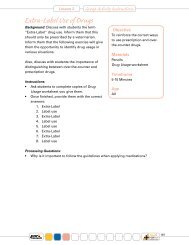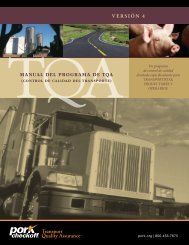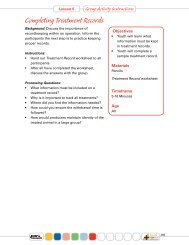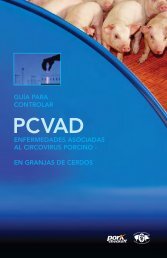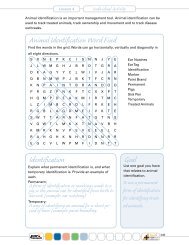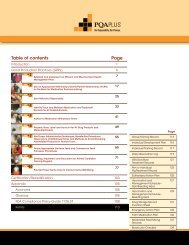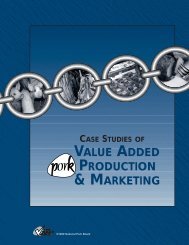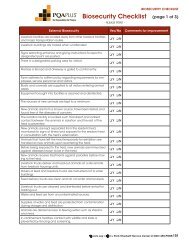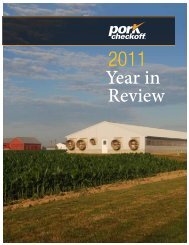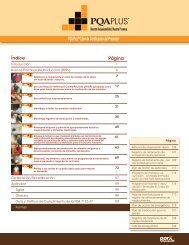The Pork Industry at a Glance - National Pork Board
The Pork Industry at a Glance - National Pork Board
The Pork Industry at a Glance - National Pork Board
Create successful ePaper yourself
Turn your PDF publications into a flip-book with our unique Google optimized e-Paper software.
<strong>Pork</strong> Production<br />
Public<br />
<strong>Pork</strong><br />
Names and<br />
Environment<br />
St<strong>at</strong>s<br />
Glossary<br />
Today Health Safety Numbers<br />
Quick Facts<br />
Quick Facts<br />
<strong>Pork</strong> Production Today<br />
Types of Oper<strong>at</strong>ions<br />
Today, pork production combines many inputs<br />
into a complex process of converting feedgrains,<br />
high-protein feed ingredients, vitamins, minerals and<br />
w<strong>at</strong>er into live hogs and eventually, pork and pork<br />
products. This ultim<strong>at</strong>e goal is <strong>at</strong>tained by five basic<br />
production systems:<br />
• Farrow-to-finish farms th<strong>at</strong> involve all stages of<br />
production, from breeding through finishing to<br />
market weights of about 265 pounds.<br />
• Farrow-to-nursery farms th<strong>at</strong> involve breeding<br />
through marketing 40- to 60-pound feeder pigs to<br />
grow-finish farms.<br />
• Farrow-to-wean farms th<strong>at</strong> involve breeding<br />
through marketing 10- to 15-pound weaned pigs to<br />
nursery-grow-finish farms.<br />
• Wean-to-finish farms th<strong>at</strong> involve purchasing<br />
weaned pigs and finishing them to market weights.<br />
• Finishing farms th<strong>at</strong> buy 40- to 60-pound feeder<br />
pigs and finish them to market weight.<br />
Feed is the major production input to the pork<br />
production process. In fact, feed accounts for more<br />
than 65 percent of all production expenses. <strong>The</strong> average<br />
whole-herd feed conversion r<strong>at</strong>io, or pounds of<br />
feed required per pound of live weight produced,<br />
for the U.S. pork industry is about 3.0 to 3.2 and<br />
is improving (getting lower) steadily. This figure<br />
includes the feed fed to boars and sows.<br />
For comparison, consider th<strong>at</strong> beef c<strong>at</strong>tle take 7 to<br />
10 pounds of feed to produce a pound of live weight,<br />
and broiler chickens require about 2 pounds of feed<br />
per pound of live weight produced. <strong>The</strong> most efficient<br />
U.S. swine herds have whole-herd feed conversion<br />
r<strong>at</strong>ios under 3.0.<br />
A variety of feed ingredients is used in proper proportions<br />
to produce “balanced” diets for pigs <strong>at</strong> each<br />
stage of their development. Corn, barley, milo (grain<br />
sorghum), o<strong>at</strong>s and sometimes whe<strong>at</strong> are used to<br />
provide dietary energy in the form of carbohydr<strong>at</strong>es<br />
<strong>Pork</strong> Production Today<br />
43


